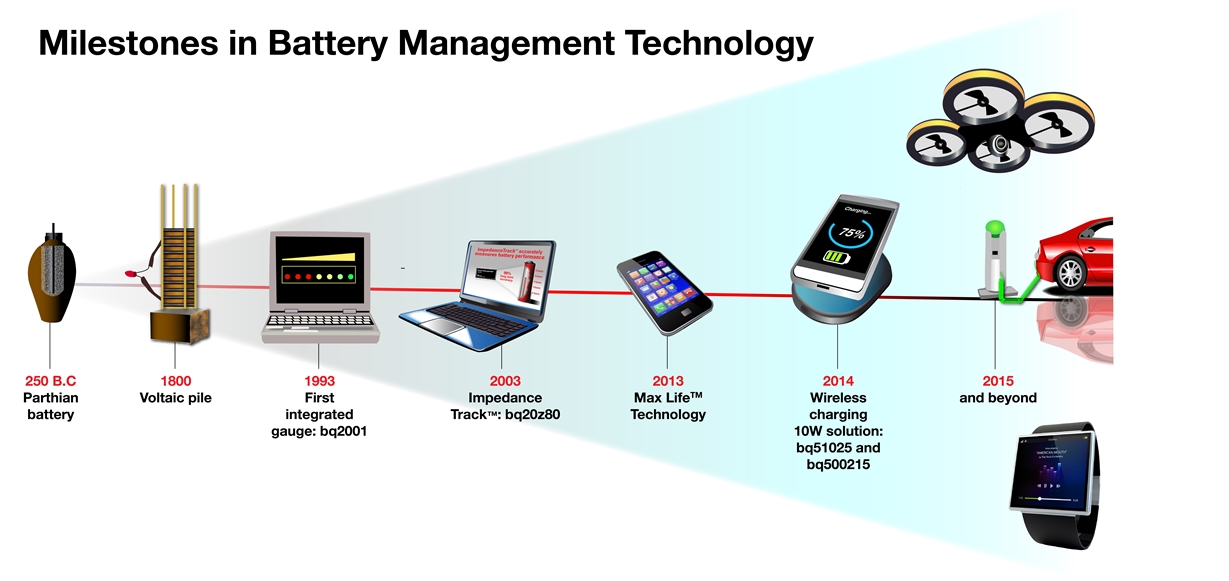It’s easy to forget how primitive life was just a few years ago. We were practically cavemen, with our phone books, paper tickets and DVD players. But electronics changed the way we live – and battery technology enables all of our favorite portable devices to be, well, portable.
The evolution of batteries is naturally tied to the products and systems that use them. As people got used to the convenience of mobile computing and communication, there was a demand (and motivation) to improve portable power sources. But better batteries enabled the creation of new mobile applications – things that we never even knew we needed before.
While battery technology has advanced (relatively) quickly in the past few years, the basic ideas are not exactly new. In 1936, archeologists discovered a 2,000-year old artifact that looked vaguely like it could have been a battery. Was this device really a battery? Maybe not – most experts today discredit that theory. But I like the idea that it might have been. Either way, if you fast-forward to the 17th and 18th centuries, the pace of scientific discovery began to accelerate, and eventually batteries became a practical source of power for newly emerging electrical devices like lights and radios by the 19th and 20th century. About a hundred years ago, the “dry cell” battery began to resemble the common disposable batteries we use today.
By the time lithium-ion batteries were commercialized in the early 1990s, the need for more sophisticated electronic monitoring circuitry became apparent. This new battery system offered many advantages in terms of energy and overall performance, so system designers were willing to invest time, effort and money into developing dedicated battery-management circuits to optimize the life cycle of these cells.
As we grow to depend on batteries more and more with each passing year, the technology in and around them will continue to progress. In the early days of mobile devices, the battery was often one of the most troublesome components in the system, as end users could not reliably estimate when their system would run out of power. Back then, we would never have considered building a device where the battery couldn’t be easily removed and replaced. Technology has progressed to the point today where batteries are seamlessly embedded into portable equipment. Users have reliable and consistent indication of their battery status thanks to accurate built-in battery-monitoring technology. They can quickly and easily recharge, and with wireless power technology, they don’t even have to make any physical connections to do so. Figure 1 showcases the TI innovation that has created today’s state-of-the-art battery management.
I wonder if a few years from now we will look back fondly on the “good old days,” when we had to tap our smartwatches to check in for our next flight.
Additional resources
View TI’s full portfolio of battery-management products

